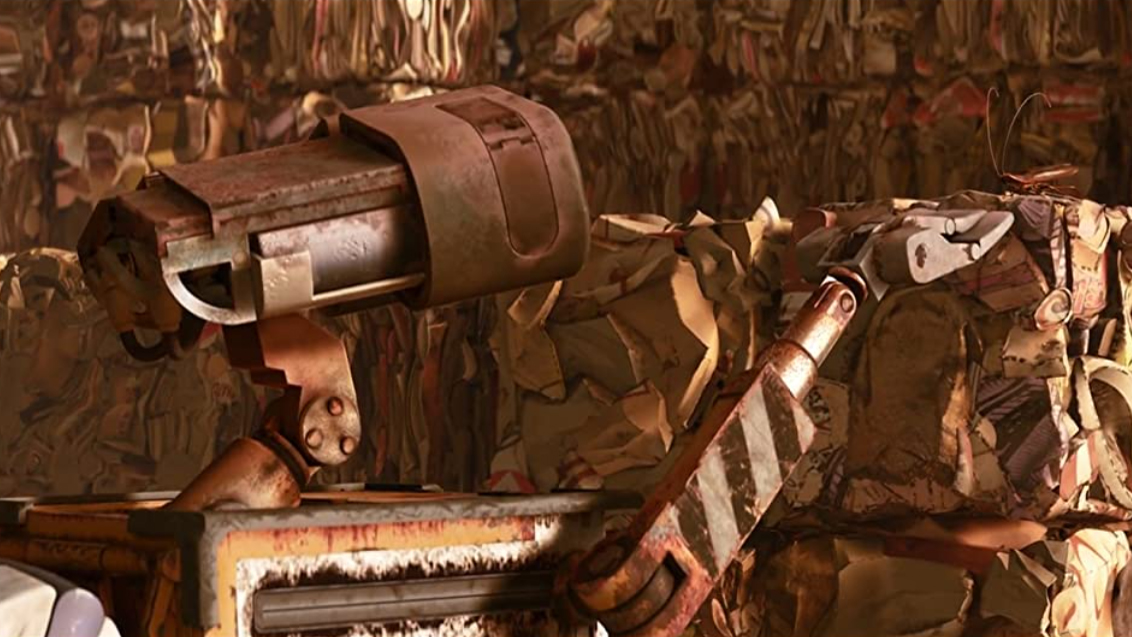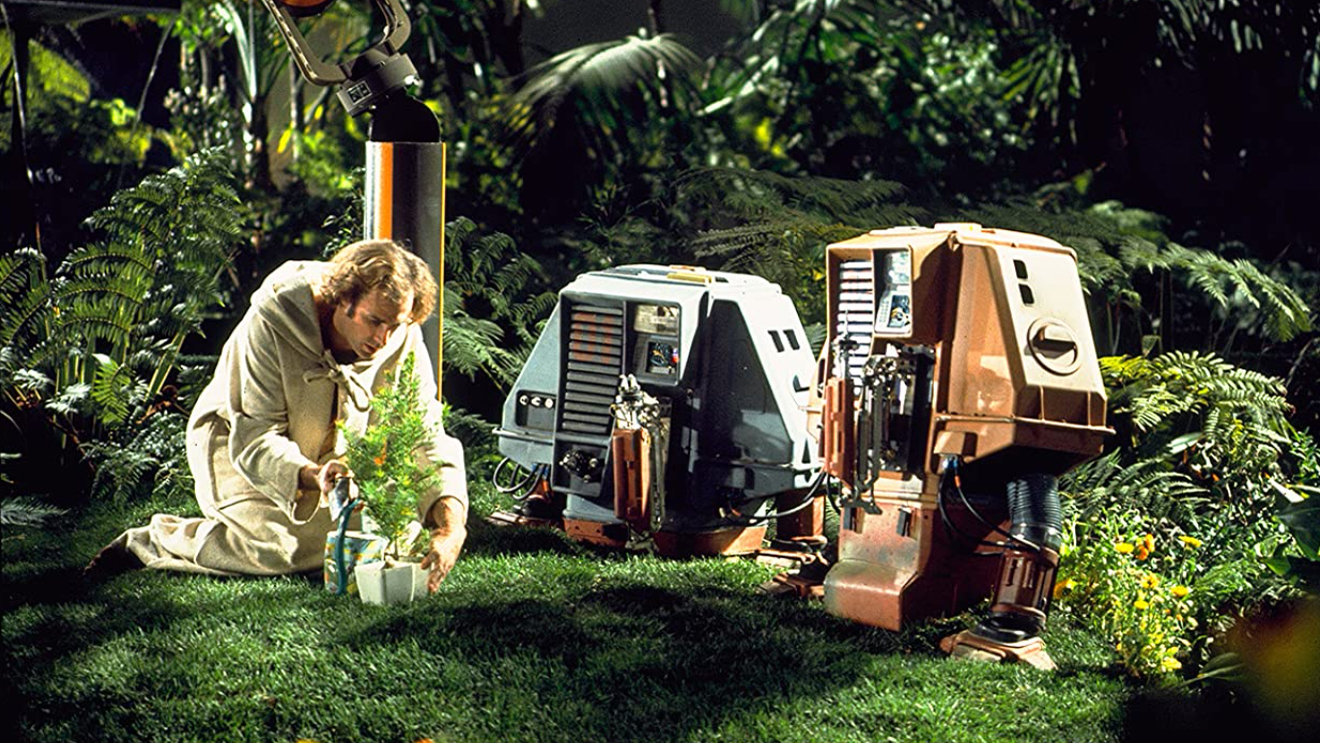Here’s why Silent Running is Wall-E for grown-ups
The two environmental-space movies have a lot in common – but only one of them comes with a truly happy ending.

In the discourse of deciding the best space movies of all time, there are some pretty bizarre concepts and plotlines that make the cut, but the very real topic of manmade climate change has only made its way into a small handful of movies.
If you’re a millennial then the go-to climate change film that likely sticks out in your mind is Pixar’s 2008 masterpiece, Wall-E. For anyone who caught the movie during their formative years, there’s a good chance that it came to frame your understanding of civilization's natural world – after all, it’s one of the only mainstream animated movies to tackle the topic head-on (FernGully notwithstanding).
But 36 years before one of the best animated space movies came to theatres, another movie managed to address many of the same concerns about climate change and looked at how space might become our savior: Silent Running. If you enjoyed Wall-E as a kid, then this is why you should absolutely watch its grown-up movie counterpart.

Wall-E versus Silent Running
Before we can delve into how the two movies connect, it’s worth having a quick refresher of the themes addressed by Wall-E – it has been 13 years since it came out after all.
The movie opens up with a vision of planet Earth that has long been abandoned, with humanity having left behind copious amounts of trash before high-tailing it in an intergalactic cruise liner. It’s up to the movie’s titular character to clean up the huge mountains of waste, in a task so gargantuan that it’ll make you think twice about complaining the next time you have to take out the garbage.
Things get really interesting when the narrative shifts from planet Earth to the depths of space, where humans have been living in a manufactured utopia for 700 years. Mankind has now devolved into a race of recliner-bound citizens, glued to the screens in front of them.
Wall-E’s depiction of humanity’s obsession with technology and comfort has only grown more potent over time, but this is where some accreditation is due – Silent Running did it first.
Breaking space news, the latest updates on rocket launches, skywatching events and more!

Just as with Wall-E, Silent Running positions space as a potential savior against climate change, but instead of shipping humanity off while robots are left to rummage through the mess, it’s the remaining wildlife that’s sent away to be cultivated by small groups of robots and humans alike, under the promise of someday returning to Earth.
The film centres around Freeman Lowell, a botanist living on the Valley Forge, which is just one of several spaceships that are equipped with multiple greenhouse structures containing plants, produce, wildlife and more. It all seems rather idyllic until you start to understand why these ships exist in the first place. See, in the world of Silent Running, it’s implied that after continued deforestation at the hands of corporate greed, society has found a way to live comfortably without nature, leading to a general sense of apathy. No-one, except Lowell, cares that the natural world is gone.
The film also implies that the Valley Forge and its endeavor has been funded by corporations as nothing more than a publicity stunt to curb their part in nature’s downfall. You only need to spot the branded food supplies aboard the ship to see these hidden messages. The idea that apathy - along with corporate greed - has led to irreversible climate change feels frustratingly true to life. And a lot darker than the message that we get from Wall-E.
Optimism versus cynicism
Being a kids movie, Wall-E is a lot more optimistic in the end about humanity’s (post) post-apocalyptic future. Captain B. McCrea of the Axiom spaceship is found to be overjoyed about the prospect of returning to Earth – once he latches on to the idea of life outside of the Axiom’s walls, he’s eager to know more about the world. That sense of optimism is nowhere to be found in Silent Running.
The film’s most famous scene features an impassioned plea from Lowell as he tries to explain to his fellow crewmates his preference for eating fresh fruit and the importance of nature itself: “It calls back a time when there were flowers all over the Earth. And there were valleys. And there were plains of tall, green grass that you could lie down in... that you could go to sleep in.”
It's all very melodramatic but understandable given the situation that Lowell finds himself in. The real kicker however is the final response from John Wolf, the only vaguely sympathetic crewmate on the Valley Forge: “The fact is, Lowell, if people were interested, something would have been done a long time ago.”
While the humans of Wall-E come to embrace nature once again, things go in the completely opposite direction throughout Silent Running’s story as the decision is made to terminate the reforestation project and destroy the remaining wildlife domes before returning to Earth.

The news is even cause for celebration amongst Lowell’s crew members – with the feeling that these forests are nothing more than a nuisance keeping them from the comforts of home. In the end, Lowell makes the decision to send the last remaining dome into space, shortly before destroying the Valley Forge and preventing his corporate overlords from locating the last forest. It’s a bleak picture, one that leaves a far more urgent tone for action amongst the viewers than Wall-E could ever hope to deliver.
If Wall-E serves as a great way of teaching children about climate change, then Silent Running is definitely the stark wake up call to show adults just how dire the situation can be – let’s just hope that it remains science fiction.
Is space the key to climate change?
Silent Running might not be as entertaining as Wall-E – although there is some merit to Bruce Dern’s brilliantly executed pratfalls – but it works as a companion piece to better understand the themes raised by Pixar’s animated flick as an adult.
In fact, both movies segue perfectly into learning more about the role that space and space organizations can have in the fight against climate change. The dominance of CO2 in Mars’ atmosphere could be used to better understand how to suppress the presence of CO2 in our own atmosphere, for instance. NASA also keeps a log of how its space-bound innovation has helped other industries around the world, including how techniques for insulating spacesuits have been adapted by construction companies.
Even though Wall-E and Silent Running indulge in the fantasies of science-fiction, they do a fantastic job of encouraging public discussion about the very real repercussions of climate change, not to mention the overlap that exists between this topic and space travel – even if intergalactic cruise liners are still a long way off.
With a background in film and tech journalism, Tom has written for a variety of publications including Trusted Reviews, NME, Recombu and IN Covent Garden Magazine. Prior to his professional career, he graduated with a Distinction in MA History from University College London, specializing in the topic of film history.

